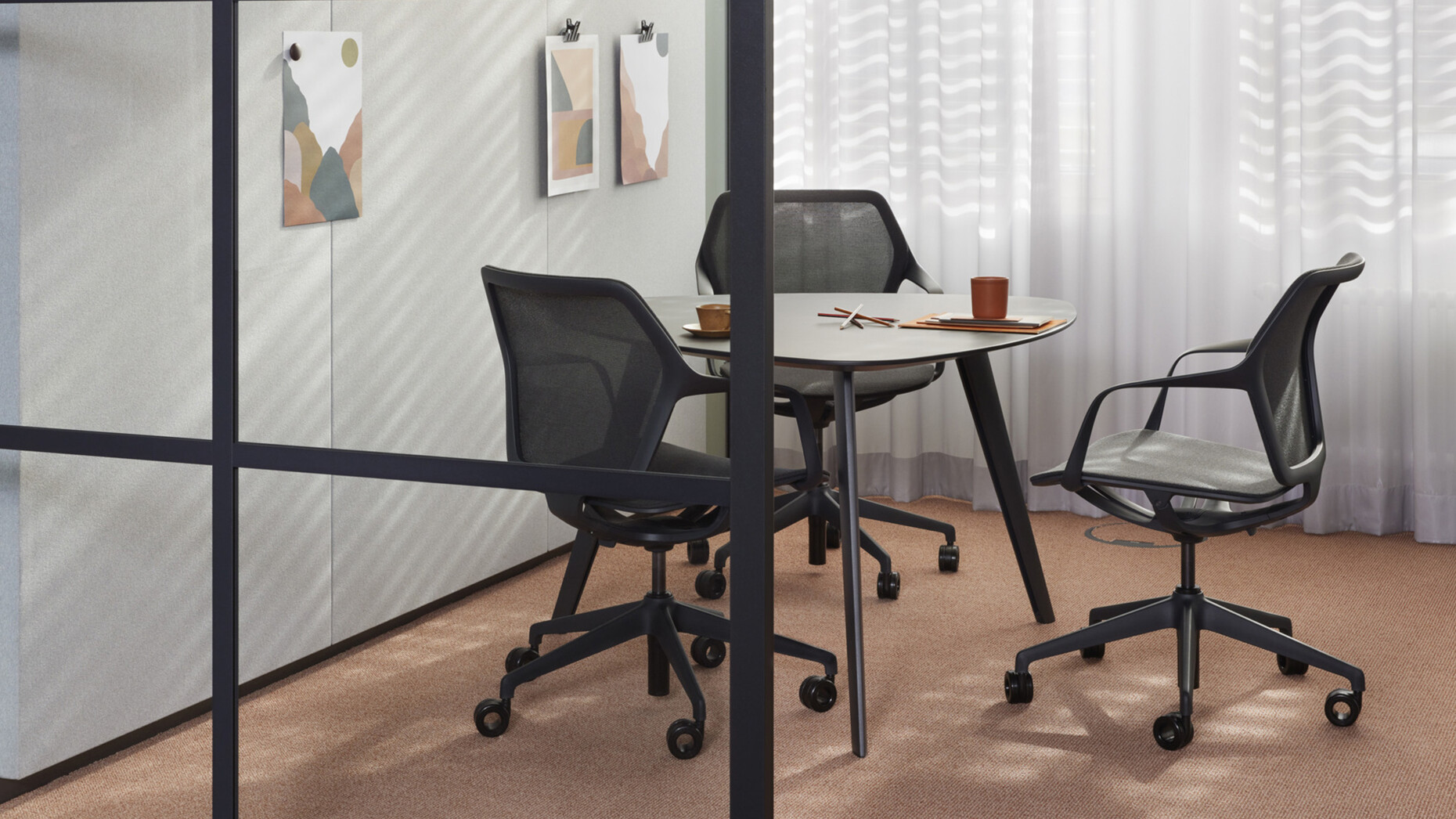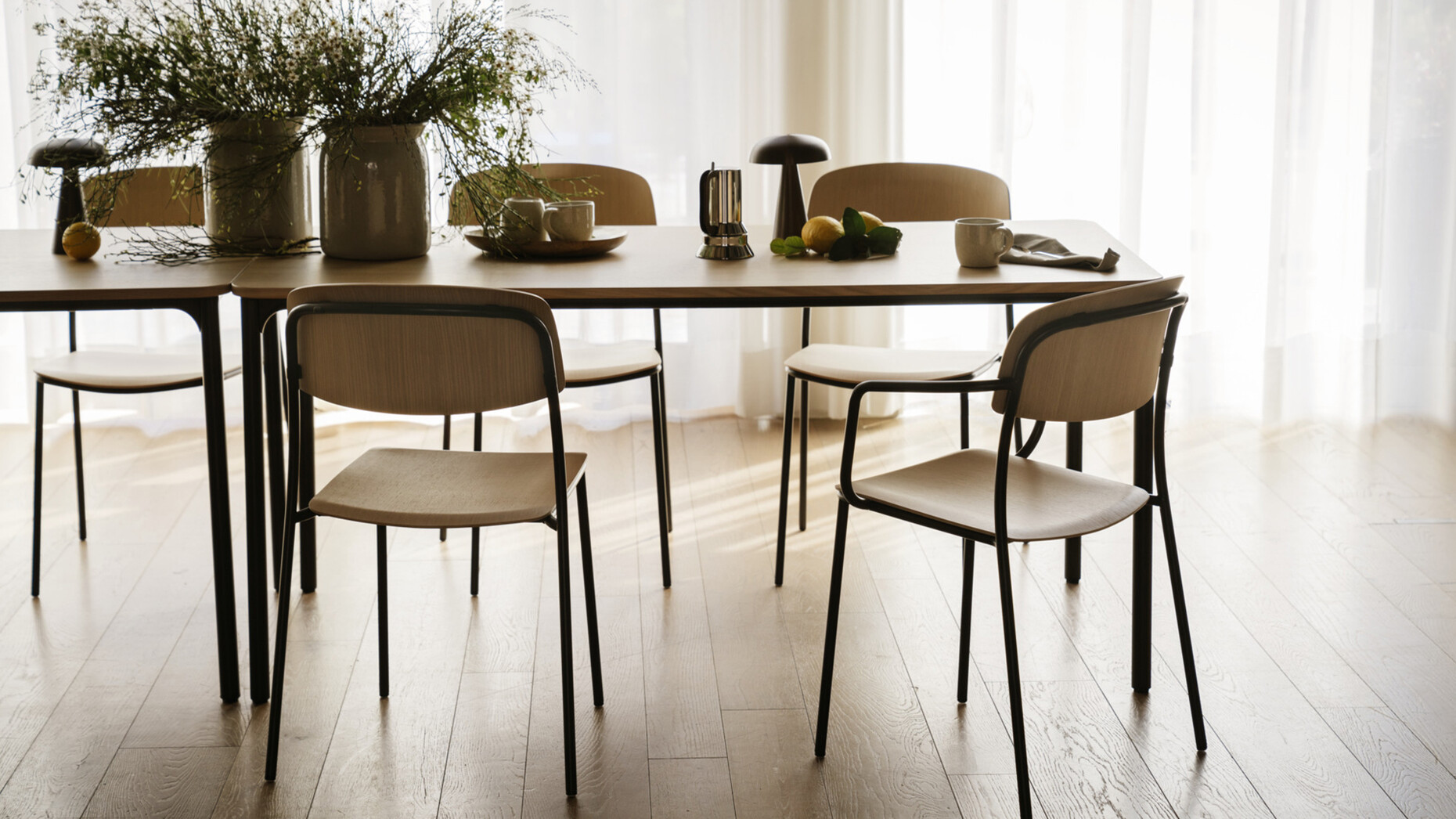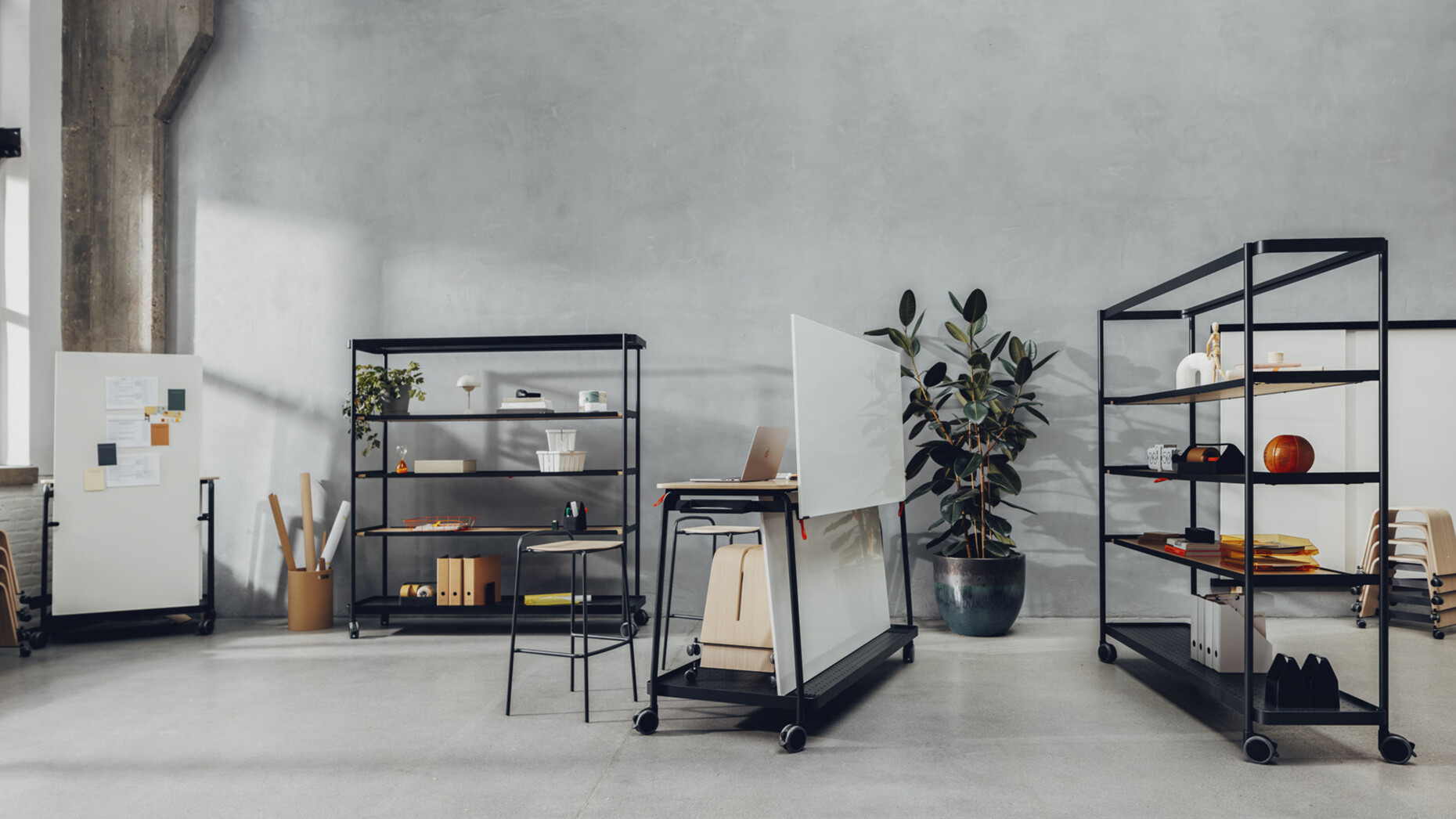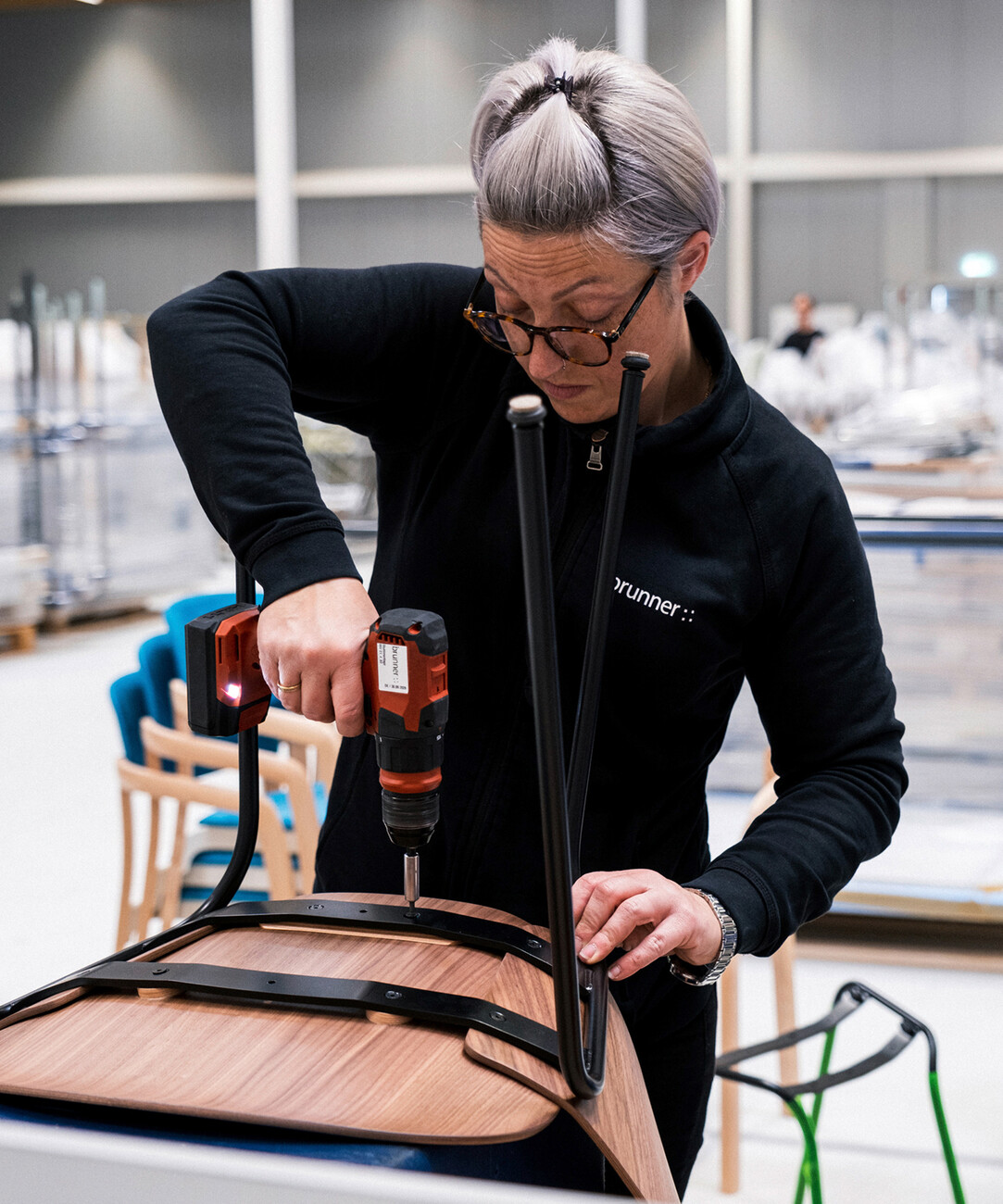In the loop
Anna Moldenhauer: What does ‘circular design’ represent for you?
Emily Erwe: By circular design, we mean three phases within a cycle, from the raw material to the usage phase to the end of its life and the question of what happens to the material afterwards.
You have collaborated with renowned designers such as jehs+laub, Stefan Diez, Steffen Kehrle, Ippolito Fleitz and atelier oï. Can you give us some examples of how circular design emerges from mutual exchange?
Emily Erwe: Sustainability is a central component of our product development. Right from the selection of materials and manufacturing, we ensure that components can be separated by type and that recycling options are used optimally. This is how our ‘ray work’ office swivel chair was created, for example, which is made of recycled plastic in the colour lava. Our designers are constantly coming up with new ideas to make products even more resource-efficient. The result is durable, lightweight and environmentally conscious products: ‘ray work’, for example, combines modern design, high comfort and thoughtful use of materials in a single office chair.
In product development, the focus is therefore on a design that keeps material consumption low and enables easy repair and subsequent separation by type. For Brunner, ‘functionality – quality – form’ is a triad. Does that mean form follows sustainability?
Emily Erwe: I would even say that all three criteria are consistently considered and specifically supported at Brunner from a sustainability perspective. We manufacture much of our furniture by hand, using high-quality materials and robust constructions. A clear design is also more durable and timeless.
In general, Brunner is guided by the three pillars of sustainability: ecology, social issues and economics. How do you define the key areas of action?
Emily Erwe: The three pillars are a general diagram for sustainability, but I personally find another representation more fitting: a circular graphic in which ecology encompasses everything as the outermost circle. This is followed by the social level, with the economy at the core. If we disregard the ecology of our actions, then society and the economy are also affected. Design should therefore always follow ecological principles. At the same time, it is important to consider the economic and social aspects. One example of this is our supply chain, which consists mainly of European suppliers. We even source our table tops regionally; the supplier is located just a few kilometres from our headquarters in Rheinau-Freistett. This ensures short transport distances and allows us to focus on partnerships that are committed to high social standards.
Since 2019, Brunner has been awarded the PEFC seal – a certification that ensures that wood and wood-based materials come from verifiably ecological and socially sustainable forestry. In 2021, an independent sustainability management system was introduced, and in 2024, sustainability profiles were created for individual models for the first time, providing an overview of their environmental impact. How do you process the knowledge gathered in these processes?
Emily Erwe: Many processes run through sustainability management in order to collect data centrally. The topic has become increasingly important, complex and dynamic in recent years. Sustainability management therefore has an interface function in addition to its auditing role. This year, we launched a focused strategy to enable us to track current measures in a more targeted manner and identify other topics that are relevant now and will be relevant in the future. For example, there is increasing research into alternative materials and the use of plastics with recycled content. This creates many synergies within the company. Knowledge about the processes is therefore not only managed by one department, but is anchored in many.
With the Innovation Factory, Brunner has gained a sustainable and modular new building designed by Brunner von Henn Architects, which combines development and production through glass walls. Transparency is also evident from the outside. In other words, Brunner is revealing its cards. Why is that?
Emily Erwe: Transparency and honest communication are definitely important issues for Brunner, and they are also part of our training programmes. In the area of sustainability in particular, it is important to communicate what has already been achieved and what we are working on. That is why we have designed our sustainability report from the outset to ensure transparency and openness. We publish a lot of relevant data and present ourselves very openly. This is also to engage in dialogue and see what the needs of the market are and how we can respond to them.
Brunner furniture aims to push boundaries and redefine them. Which boundaries have you redefined in design in recent years?
Emily Erwe: This phrase originally dates back to the company's early days, as we have always placed great emphasis on quality, individuality and innovation since our foundation. In this sense, redefining boundaries means being able to respond quickly and flexibly to customer wishes and growing market requirements, as well as leading the way with new ideas. This applies to all processes, such as measures within the company, and thus also to the continuous exploration of our options for a more sustainable product portfolio.
What is the next step in circular design that you would like to achieve?
Emily Erwe: The circular economy encompasses many aspects that we are continuously working on – whether in the selection of materials or in the usage phase of our products. This year, we have gone one step further and expanded our service. With Brunner ReNew, we offer furniture take-back and reconditioning services. This gives furniture a new lease of life. As a result, waste and CO₂ emissions are significantly reduced while the high quality of our products is maintained.
































